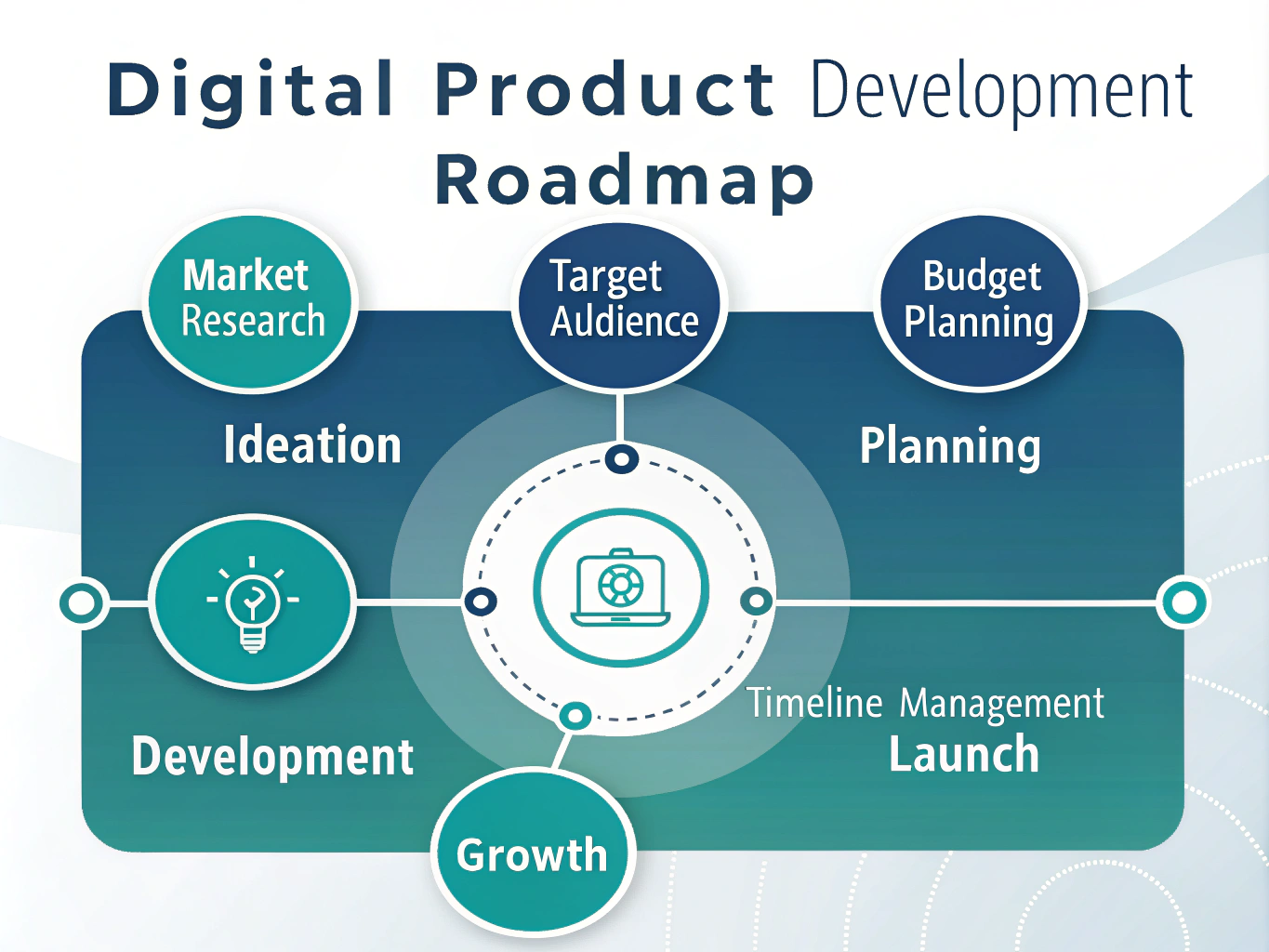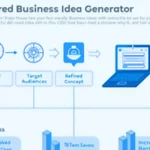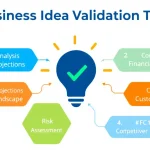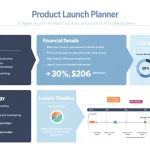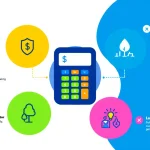Is this tool helpful?
How to Use the Digital Product Development Guide Generator Effectively
To make the most of this powerful Digital Product Development Guide Generator, follow these steps:
- Industry Focus: Enter the specific digital product industry you want to focus on. For example, you might input “educational technology” or “fitness tracking apps”.
- Target Audience: Describe your target audience for the digital product. Consider inputting “working professionals aged 25-40” or “high school students preparing for college”.
- Product Type: Specify the type of digital product you want to develop. Examples could include “productivity software” or “mobile gaming app”.
- Budget Range (Optional): If you have a budget in mind, enter your estimated range. You might input “$20,000 – $50,000” or “Under $10,000”.
- Timeline Expectation (Optional): Provide your expected timeline for product development and launch. You could enter “4-6 months” or “1 year”.
- Click the “Generate Digital Product Development Guide” button to receive your customized guide.
Once you’ve received your guide, you can easily copy it to your clipboard using the “Copy to Clipboard” button for further use or reference.
Unlocking Digital Product Success: Your Comprehensive Development Guide
In today’s fast-paced digital landscape, creating a successful digital product requires more than just a great idea. It demands a structured approach, market insights, and strategic planning. The Digital Product Development Guide Generator is your ultimate companion in this journey, providing you with a tailored roadmap to navigate the complex world of digital product creation.
This powerful tool combines industry best practices, market research techniques, and proven development strategies to generate a comprehensive guide customized to your specific needs. Whether you’re a startup founder, an established business looking to expand into digital offerings, or an entrepreneur with a groundbreaking idea, this generator will equip you with the knowledge and steps necessary to bring your digital product to life.
The Purpose and Benefits of the Digital Product Development Guide Generator
The primary purpose of this tool is to streamline the digital product development process, helping you avoid common pitfalls and maximize your chances of success. By providing a structured approach tailored to your specific industry, target audience, and product type, the generator ensures that you’re focusing on the most critical aspects of product development from the outset.
Key benefits of using this generator include:
- Time savings through a structured development approach
- Reduced risk of costly mistakes or oversights
- Increased likelihood of product-market fit
- Enhanced understanding of your target audience and market dynamics
- Improved strategic planning for marketing and sales
- Greater awareness of legal and compliance requirements
- A clear roadmap for product iteration and improvement
Maximizing the Benefits of Your Digital Product Development Guide
To fully leverage the power of your customized guide, consider the following strategies:
1. Embrace Comprehensive Market Research
Your guide will provide insights into conducting effective market research. Take this advice to heart and invest time in understanding your target audience, competitors, and market trends. This foundational knowledge will inform every subsequent decision in your product development journey.
2. Leverage Creative Ideation Techniques
The guide will offer methods for generating and validating product ideas. Experiment with different brainstorming techniques, such as mind mapping, SCAMPER (Substitute, Combine, Adapt, Modify, Put to another use, Eliminate, Reverse), or design thinking workshops. Remember, the goal is to generate a wide range of ideas before narrowing down to the most promising ones.
3. Follow the Step-by-Step Development Approach
Your guide will outline a structured approach to product development. Adhere to this framework, but remain flexible enough to adapt to new insights or challenges as they arise. Each step builds upon the previous one, creating a solid foundation for your digital product.
4. Implement Multi-Channel Marketing Strategies
The marketing and promotion strategies provided in your guide are crucial for product success. Develop a comprehensive marketing plan that encompasses various channels, including social media, content marketing, influencer partnerships, and paid advertising. Tailor your messaging to resonate with your target audience and highlight your product’s unique value proposition.
5. Diversify Your Sales Channels
Explore the various sales channels suggested in your guide. Don’t limit yourself to a single platform; instead, consider a multi-channel approach to maximize your product’s reach and accessibility. This might include your own website, app stores, third-party marketplaces, or even partnerships with complementary businesses.
6. Prioritize Customer Feedback and Continuous Improvement
Your guide will emphasize the importance of gathering and acting on customer feedback. Implement robust feedback mechanisms from the outset and create a culture of continuous improvement within your team. Regular updates and iterations based on user input will help your product stay relevant and competitive.
7. Stay Compliant and Protect Your Intellectual Property
Pay close attention to the legal and compliance considerations outlined in your guide. Consult with legal professionals to ensure your product meets all necessary regulations and that your intellectual property is adequately protected. This proactive approach can save you from costly legal issues down the line.
Addressing User Needs and Solving Specific Problems
The Digital Product Development Guide Generator is designed to address a wide range of challenges faced by digital product creators. Let’s explore how it tackles specific user needs:
1. Overcoming Market Uncertainty
Many entrepreneurs struggle with identifying viable market opportunities. The guide provides targeted advice on conducting market research, helping you uncover unmet needs and potential gaps in the market. For instance, if you’re developing a fitness tracking app, the guide might suggest researching emerging fitness trends, analyzing user reviews of existing apps, and conducting surveys to identify pain points in current solutions.
2. Refining Product Concepts
Transforming a vague idea into a concrete product concept can be daunting. The guide offers techniques for idea refinement and validation. For example, if you’re creating an e-learning platform for coding, it might recommend creating user personas, developing a minimum viable product (MVP), and conducting beta testing with a small group of target users to validate your concept before full-scale development.
3. Navigating Technical Challenges
The technical aspects of digital product development can be overwhelming, especially for non-technical founders. Your guide will provide insights into choosing the right tools and technologies for your specific product. For instance, if you’re building a web-based project management tool, it might suggest exploring frameworks like React for the front-end and Node.js for the back-end, while also recommending cloud hosting solutions for scalability.
4. Crafting Effective Marketing Strategies
Many great products fail due to ineffective marketing. The guide addresses this by providing tailored marketing strategies based on your product type and target audience. For a B2B SaaS product, it might recommend content marketing through whitepapers and case studies, leveraging LinkedIn for targeted advertising, and implementing a referral program to encourage word-of-mouth growth.
5. Optimizing Sales Channels
Choosing the right sales channels can significantly impact your product’s success. The guide offers insights into various platforms and strategies suitable for your specific digital product. For example, if you’re launching a digital cookbook, it might suggest a multi-channel approach including your own website with direct downloads, partnerships with culinary influencers, and listings on platforms like Amazon Kindle.
6. Implementing Effective Feedback Loops
Continuous improvement is crucial for long-term success. Your guide will provide strategies for gathering and acting on customer feedback. For a mobile gaming app, it might recommend implementing in-app feedback tools, analyzing user behavior through analytics, and creating a community forum for players to share suggestions and report issues.
7. Ensuring Legal Compliance
Navigating the legal landscape of digital products can be complex. The guide helps by highlighting key legal considerations specific to your product type. For instance, if you’re developing a fintech app, it would emphasize the importance of understanding financial regulations, data protection laws, and securing necessary licenses or certifications.
Practical Applications and Use Cases
To illustrate the versatility and effectiveness of the Digital Product Development Guide Generator, let’s explore some practical use cases across different industries:
1. Educational Technology (EdTech) Platform
Scenario: A team of educators wants to create an adaptive learning platform for high school students.
How the guide helps:
- Market Research: Suggests analyzing current educational trends, student pain points, and teacher needs.
- Product Development: Recommends incorporating AI for personalized learning paths and gamification elements for engagement.
- Marketing Strategy: Proposes partnerships with schools and educational influencers for product adoption.
- Legal Considerations: Highlights the importance of student data protection and compliance with educational standards.
2. Health and Wellness Mobile App
Scenario: A fitness enthusiast plans to develop a holistic wellness app combining nutrition, exercise, and meditation.
How the guide helps:
- Target Audience: Assists in defining user personas across different age groups and fitness levels.
- Feature Planning: Suggests integrating wearable device connectivity, personalized meal plans, and guided meditation sessions.
- Monetization Strategy: Proposes a freemium model with premium features and virtual coaching sessions.
- User Feedback: Recommends implementing in-app surveys and progress tracking for continuous improvement.
3. B2B Software as a Service (SaaS) Solution
Scenario: A startup aims to create a project management tool specifically for creative agencies.
How the guide helps:
- Competitive Analysis: Provides methods for identifying gaps in existing project management solutions.
- Product Differentiation: Suggests focusing on features tailored to creative workflows, such as asset management and client approval processes.
- Sales Strategy: Recommends a combination of direct sales, partner programs, and free trials for customer acquisition.
- Customer Success: Emphasizes the importance of onboarding support and regular check-ins for client retention.
4. E-commerce Platform for Artisanal Products
Scenario: An entrepreneur wants to create a niche e-commerce platform connecting local artisans with global customers.
How the guide helps:
- Market Opportunity: Assists in identifying trending handmade product categories and target customer segments.
- Platform Development: Suggests features like customizable storefronts for artisans and AR product previews for customers.
- Marketing Approach: Proposes leveraging social media influencers and content marketing to showcase artisan stories.
- Logistics Planning: Highlights the importance of establishing reliable shipping partners for international deliveries.
5. Augmented Reality (AR) Gaming App
Scenario: A game development studio plans to create an AR-based treasure hunt game for urban exploration.
How the guide helps:
- Technology Stack: Recommends suitable AR development frameworks and geolocation APIs.
- User Engagement: Suggests implementing social features, daily challenges, and location-based events.
- Monetization: Proposes a combination of in-app purchases, sponsored locations, and premium content.
- Safety Considerations: Emphasizes the need for user guidelines and safety features for real-world gameplay.
Frequently Asked Questions (FAQ)
1. How long does it typically take to develop a digital product?
The development timeline can vary significantly based on the complexity of the product, available resources, and market conditions. Simple apps or websites might take 3-6 months, while more complex platforms could require 9-18 months or more. Your guide will provide a more specific estimate based on your inputs.
2. What’s the best way to validate my digital product idea?
Idea validation typically involves market research, creating a minimum viable product (MVP), and gathering user feedback. Your guide will provide specific validation strategies tailored to your product type and industry.
3. How much should I budget for marketing my digital product?
Marketing budgets can vary widely, but a common rule of thumb is to allocate 10-20% of your expected revenue or total budget to marketing efforts. Your guide will offer more specific recommendations based on your product and target market.
4. Should I build my product in-house or outsource development?
This decision depends on factors like your team’s technical expertise, budget, and long-term product vision. Your guide will help you weigh the pros and cons of each approach based on your specific circumstances.
5. How do I protect my digital product idea from being copied?
While it’s challenging to completely prevent copying, you can protect your intellectual property through patents, copyrights, and trademarks. Your guide will provide industry-specific advice on IP protection strategies.
6. What are the key metrics I should track for my digital product?
Important metrics often include user acquisition cost, retention rate, customer lifetime value, and engagement metrics. Your guide will suggest the most relevant KPIs for your specific product and business model.
7. How often should I update my digital product?
Regular updates are crucial for maintaining user engagement and addressing emerging needs. The frequency can vary, but many successful products release minor updates every 2-4 weeks and major updates every 3-6 months. Your guide will provide more specific recommendations based on your product type.
8. What are the most common reasons digital products fail?
Common reasons include poor market fit, inadequate user experience, ineffective marketing, and failure to adapt to user feedback. Your guide will help you navigate these potential pitfalls with targeted strategies and best practices.
9. How do I choose the right pricing model for my digital product?
Pricing depends on factors like your target audience, competitive landscape, and value proposition. Options include subscription models, one-time purchases, freemium models, and more. Your guide will help you evaluate the best pricing strategy for your specific product.
10. What’s the best way to gather and implement user feedback?
Effective methods include in-app feedback tools, user surveys, usability testing, and monitoring app store reviews. Your guide will suggest the most appropriate feedback mechanisms for your product and provide strategies for prioritizing and implementing user suggestions.
By leveraging the insights and strategies provided by the Digital Product Development Guide Generator, you’ll be well-equipped to navigate the challenges of bringing your digital product to market. Remember that success in the digital product space often comes from a combination of thorough planning, adaptability, and a deep understanding of your users’ needs. Use this guide as your roadmap, but always be prepared to iterate and evolve as you learn more about your market and users.
Important Disclaimer
The calculations, results, and content provided by our tools are not guaranteed to be accurate, complete, or reliable. Users are responsible for verifying and interpreting the results. Our content and tools may contain errors, biases, or inconsistencies. We reserve the right to save inputs and outputs from our tools for the purposes of error debugging, bias identification, and performance improvement. External companies providing AI models used in our tools may also save and process data in accordance with their own policies. By using our tools, you consent to this data collection and processing. We reserve the right to limit the usage of our tools based on current usability factors. By using our tools, you acknowledge that you have read, understood, and agreed to this disclaimer. You accept the inherent risks and limitations associated with the use of our tools and services.
